Kobe City, Japan, is currently celebrating the 150th anniversary of the opening of the Port of Kobe with an array of events, from festivals and parades to fishing competitions and a Japan Coast Guard exhibition. The port’s opening to the west in the late 1800s helped make Kobe the international city it is today. Rather than passively acknowledging its history, Kobe has embraced its international label, which is unique given the stereotypical insularity of most of Japan. To help maintain its international image, the city’s future development plans actively include foreigners by providing extensive programmes and aids to assist international residents and visitors with the goal of ensuring that all can live comfortably in the city.
Kobe’s History as an International City
In 1858 (after the opening of Japan in 1854 by Commodore Matthew Perry), Britain and Japan signed the Anglo-Japanese Treaty of Amity and Commerce, also known as the Elgin Treaty. The treaty called for the opening of ports including Nagasaki, Kanagawa and Kobe. After a delay, Kobe’s port opened on January 1, 1868, establishing its place among the first Japanese cities opened to western influence. The port’s opening helped Kobe become one of Japan’s main ports as well as an international port city — even, perhaps, ‘one of Japan’s most international cities.’
After the opening of the port, Americans and Europeans established a Foreigners’ Settlement in Kobe. The settlers and the port’s trade brought Western cuisine, baked goods, clothing and entertainment into Japan, making Kobe ‘the first city in Japan to assimilate Western culture’, according to the city’s Chamber of Commerce. The Kobe city government’s PR Specialist, Louise Dendy, asserted that Kobe’s history has notably led to current residents being “proud of the international atmosphere of the city and... historically open to new ideas from abroad, which is not the case in many other Japanese cities.”
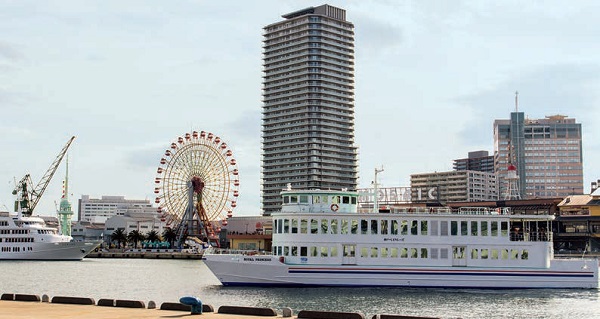
ALL PHOTOS:RJ MCKEEHAN
Kobe’s international atmosphere is also evident through its diverse religious institutions and international neighbourhoods. The Kobe Muslim Mosque, established in October 1935, was the first permanent mosque in Japan. Kobe also boasts a synagogue and multiple Christian churches. In addition, Kobe’s Chinatown, Nankinmachi, is one of the three major Chinatowns in the country, serving as both a tourist attraction and a microcosm of Chinese culture. The Japanese government sought to preserve Kobe’s historical Western influence by designating the Ijinkan, or Western-style residences built by some of the original American and European settlers, under the Important Preservation Districts for Groups of Traditional Buildings Act in 1980. Although only 30 houses remain of the original 300, some have now been converted into coffee houses and restaurants, showcasing the Western architecture while allowing visitors to ‘enjoy the city’s international culture and history filled with a multicultural atmosphere,’ according to the Japan National Tourism Organisation.
The ‘International’ page of the Kobe City government website openly proclaims Kobe as ‘a port city which is open to the world.’ Desiring to be a ‘foreign-resident-friendly city,’ Kobe currently hosts the headquarters of more than 60 foreign-affiliated companies — a number that rises to over 200 if international business establishments are also included.
Out of its largely homogeneous population of 1.5 million, over 46,000 were registered foreign residents in April 2017. The largest group, nearly 20,000, is from South Korea, with others coming from China, Vietnam and the United States. The city also aims to draw 1.3 million foreign visitors annually, and had reached 1.24 million several months before the end of 2017.
Resources for International Residents
The Kobe City government describes part of its future vision for the city as a place where ‘foreign individuals... can make themselves at home.’ As a result, Kobe aims to provide ample support for its foreign residents, many of whom face communication difficulties in Japan. The Kobe City website, which itself has eight foreign language options, provides links to the Kobe International Community Center (KICC), the city’s main programme to provide assistance to foreign residents. The centre was established in July 1995 and is managed by the Kobe International Centre for Cooperation and Communication, which receives funding, direction and some staff from the Kobe City government as an ‘affiliated organisation’ (gaikaku dantai) of the government. This managing organisation aims to make Kobe ‘an easier place for foreigners to live’ while encouraging international exchange and ‘multicultural inclusivity between citizens.’
The KICC website offers links to helpful services and is available in English, Chinese, Korean, Vietnamese, Portuguese, Spanish, Japanese and even ‘simple Japanese’ (providing valuable practice for those studying the language, or perhaps accessibility for residents who may not speak one of the supported languages but who do understand some Japanese). The range of services includes consultations for daily life issues, counseling on immigration status, administrative procedures including assistance with visas, consultations on labour and tax issues and interpretation services. Kobe additionally offers translation services at all ward offices. The online ‘Kobe Living Guide’ provides further detailed information on matters from consulate locations to explanations of the process involved in changing a home address within Kobe City, to information on domestic violence consultations, as well as lists of museums and sports facilities for recreation. The Japanese supporter programme is another popular KICC service, in which international residents can be paired with a Japanese volunteer to practice either the Japanese language or Japanese cultural activities (specifically calligraphy or flower arrangement).
Thus, the KICC not only provides services for foreign residents, but also through programmes such as the volunteer supporters and the annual Kobe International Fair, actively facilitates international exchange.
Like many Japanese cities, Kobe provides extensive signage in English and occasionally other languages, but the city’s other, more distinctive efforts to assist international residents include an active Facebook page and interpretation service for calls to the national emergency line, 119. First, the Facebook page, ‘Kobe City’ (@kobecityPR), shares information in English on upcoming festivals, events and exhibitions, as well as Kobe daily life seminars, summer beach opening information and extreme weather warnings. Beginning in 2014, Kobe also joined several other Japanese cities in implementing an interpretation service for non-Japanese speakers calling 119, Japan’s emergency line. The service, which is available at all times, supports English, Chinese, Korean, Spanish and Portuguese to ensure that international residents can access emergency services even when dispatchers are unable to speak their native language. Overall, Kobe’s multiple services represent the city’s direct involvement in assisting foreign residents in order to advance its image as an international city.
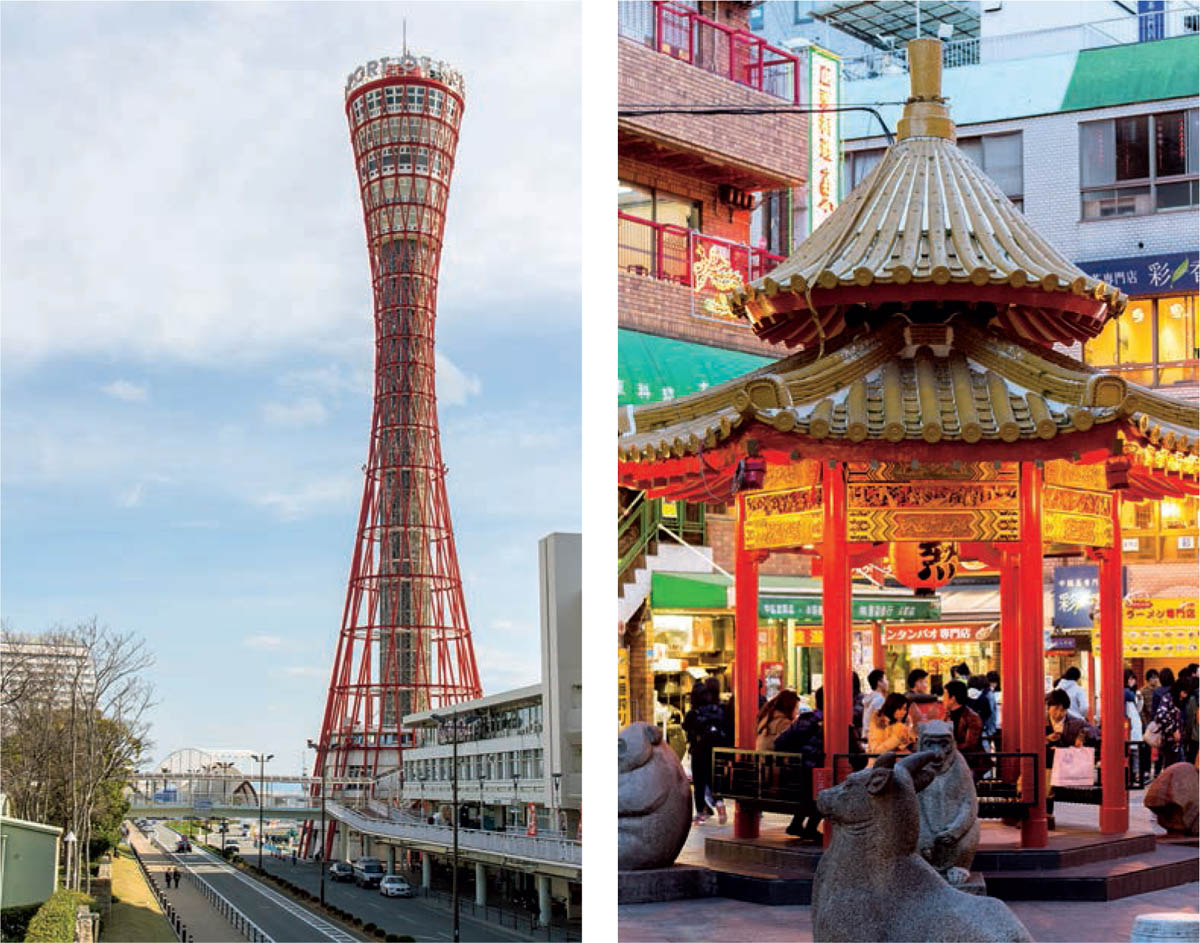
Right: Kobe Chinatown (Nankinmachi)
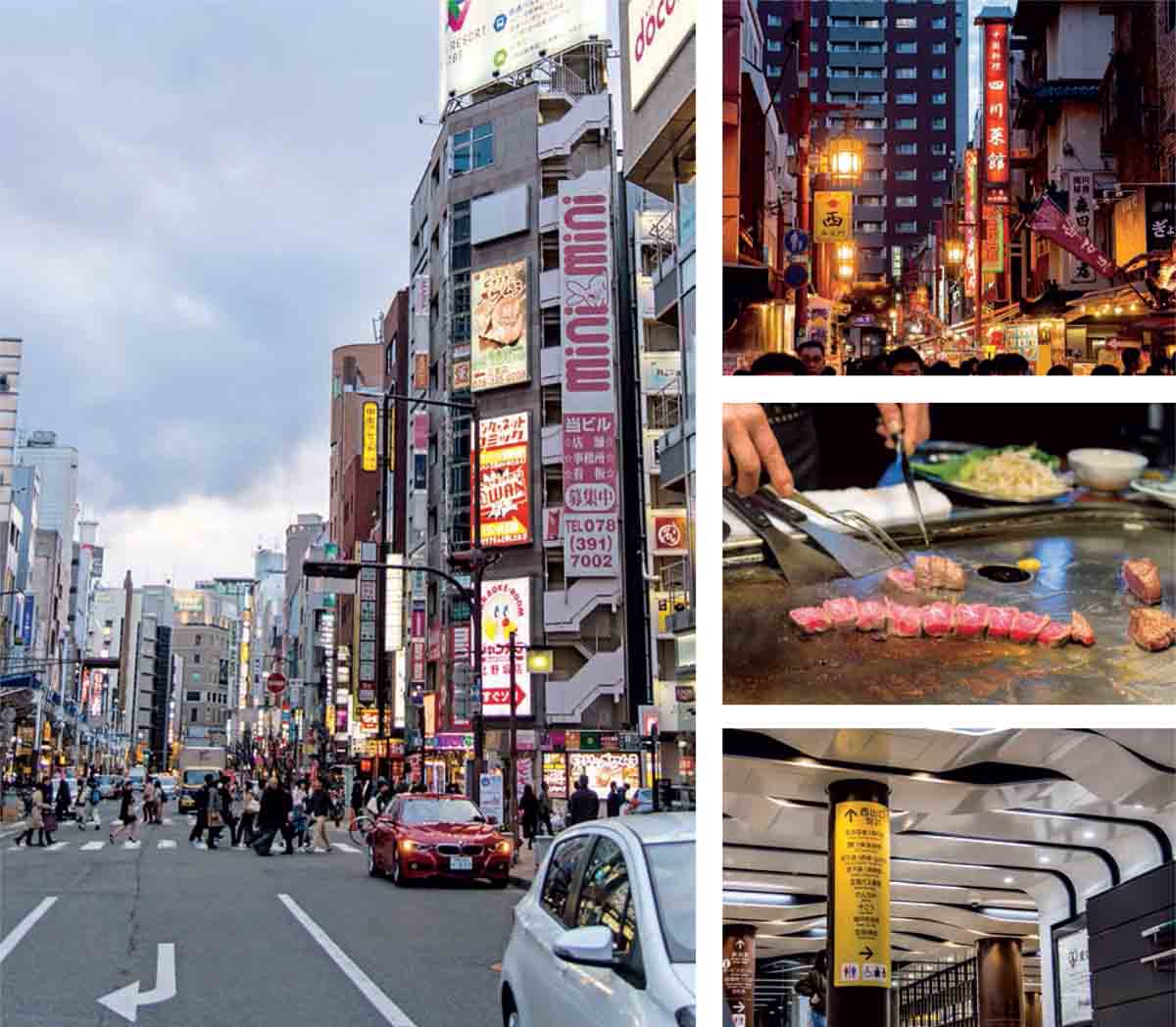
Top Right: China Town
Middle Right: Food being prepared
Bottom Right: Kobe train station multilingual sign
Resources for International Visitors
Since Kobe hopes to further develop its international outlook through increased tourism, the city offers free Wi-Fi and discount coupon programmes to appeal specifically to international visitors. Tourists who visit the Kobe Tourist Information Centre may present their passport in order to receive free Wi-Fi access for one week at more than 3,000 access points in Kobe City. (Residents may also access the free Wi-Fi network in certain areas for half-hour periods.)
Additionally, foreign visitors are eligible to use the Kobe Welcome Coupon, which is available for download on the Internet and offers discounts and complimentary services on listed items when tourists show their passport. The city even has a Facebook page intended specifically for visitors called ‘Visit Kobe’, sharing pictures of the city’s attractions along with useful tourism information.
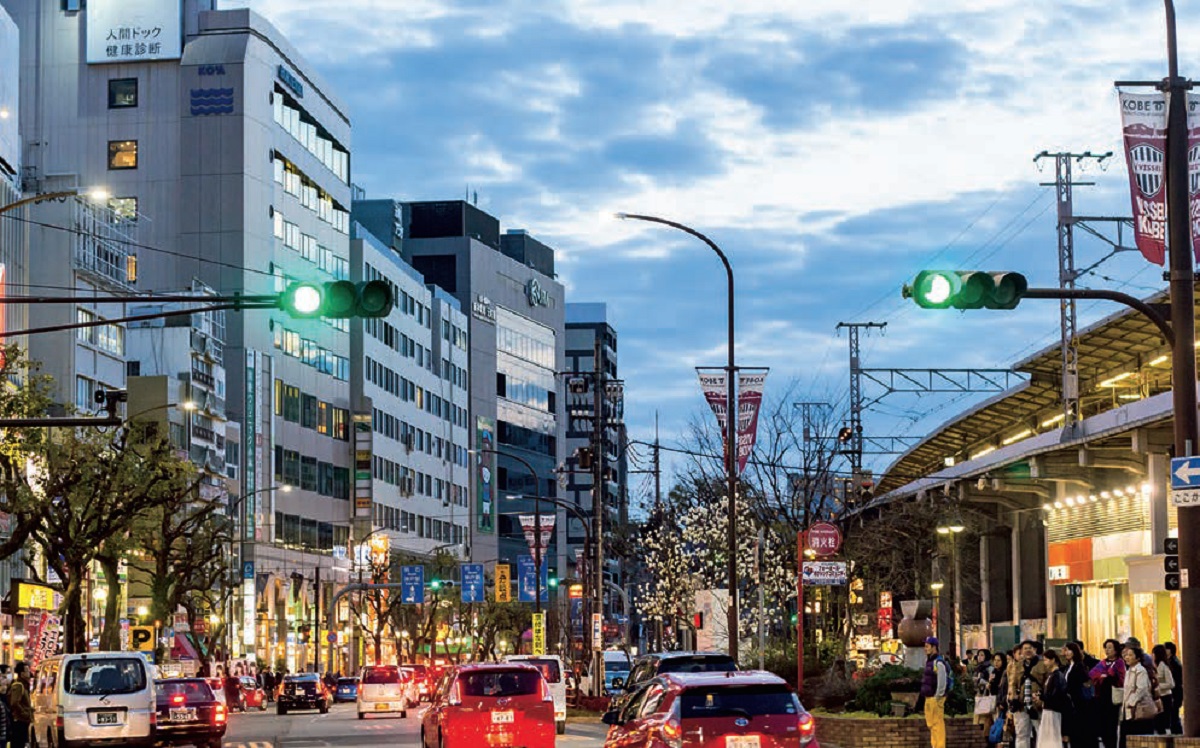
International Promotion
As Kobe City strives to create a pleasant living and working environment for non-Japanese people and actively encourages international exchange, its international promotion initiatives draw on current and former international residents to share their positive experiences living in the city in order to persuade others to visit.
A prime example is the Kobe PR Ambassadors programme, started by Dendy in April 2016 to help ‘promote Kobe to foreigners from a foreigner’s perspective.’
This year’s 25 non-Japanese, volunteer ambassadors, appointed by the Kobe City Government for a one-year term, share their experiences living, working or studying in Kobe via social media. Since the programme’s inception, thousands of their posts across social media platforms have been viewed over a hundred thousand times, promoting the Kobe lifestyle from a personal perspective.
Another initiative, the Kobe International Club, appeals to an almost direct opposite group to promote the city. Rather than publicising the city through foreigners currently living in Japan, the club seeks to unite people around the world who want to support Kobe. The Kobe International Club, Silicon Valley, the first division of the club, was founded in February 2016. According to the club’s webpage, Kobe’s mayor intends to further promote the initiative and encourage the founding of more divisions while on international business trips.
Conclusion
Overall, Kobe seeks to develop its international identity not only through increasing tourism, but also by helping visitors and residents alike feel at home in the city and it has extensive programmes in place to support these goals. Pursuing internationalization improves Kobe’s image and its competitiveness in a world characterised by globalisation. By attracting international talent and businesses, Kobe works to revitalise both its own and Japan’s economy, resulting in a thriving city that is welcome to all.
ALL PHOTOS:RJ MCKEEHAN
•Hoover, William D., Historical Dictionary of Postwar Japan. Toronto: The Scarecrow Press, Inc. (2011): 146. •“International.” Kobe City. Accessed 16 July 2017. http://www.city.kobe.lg.jp/foreign/english/information/outline/intlexchg/index.html. •Kobe City Vision. “Tourism.” Kobe City Government. Accessed 15 Aug. 2017. http://kobevision.jp/en/vision.•“International.” Kobe City. Accessed 16 July 2017. http://www.city.kobe.lg.jp/foreign/english/information/outline/intlexchg/index.html.• Dendy, Louise. Email to Erika Klein. 13 Aug. 2017

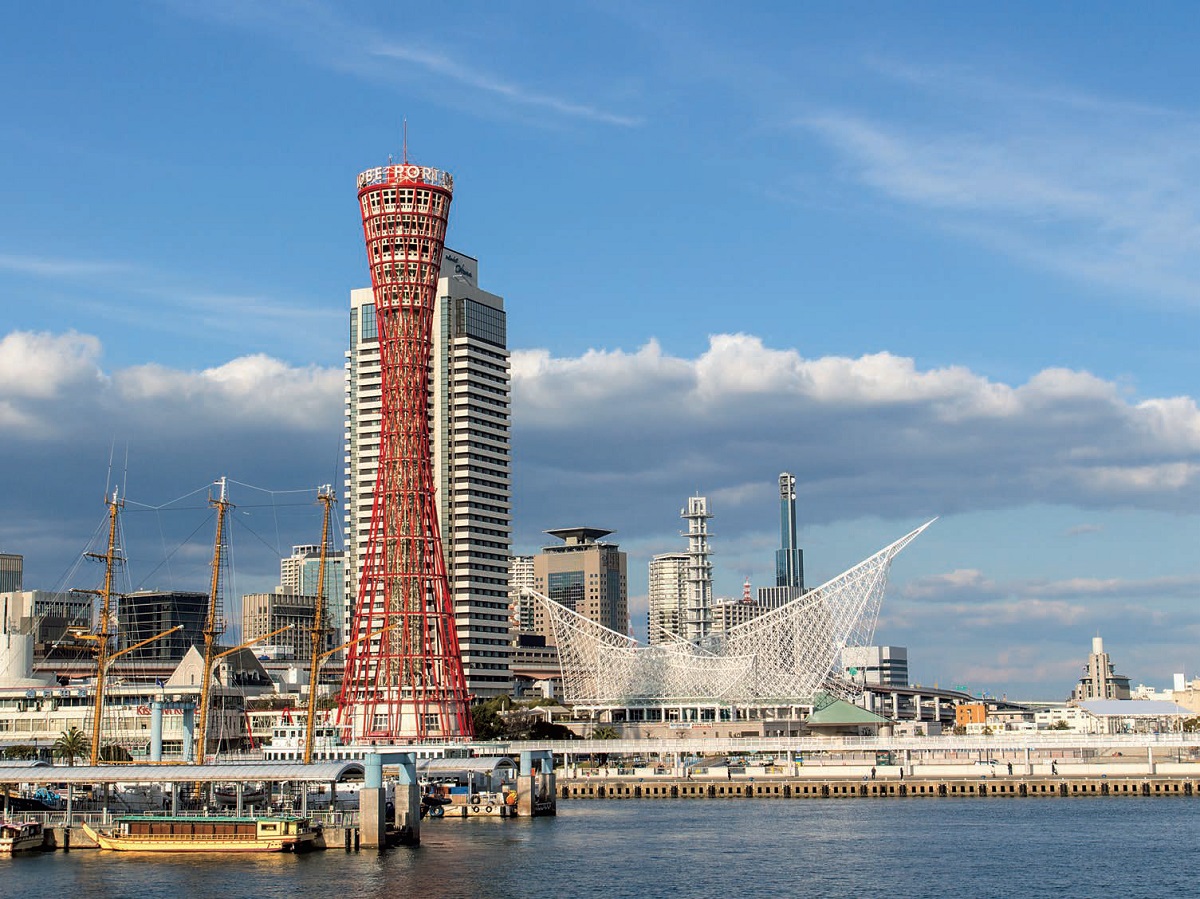

Comments (0)